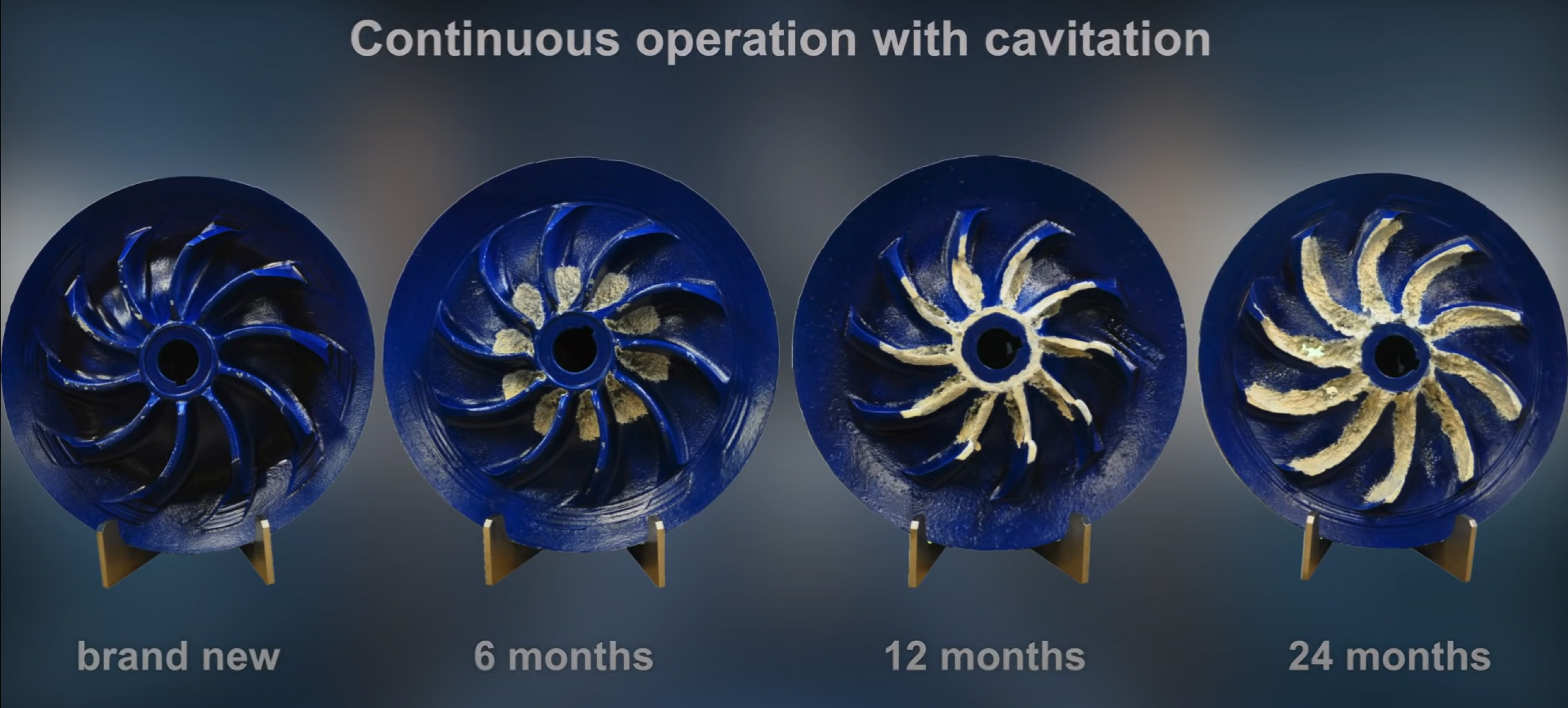What is Pump Cavitation and How is It Prevented?
11 March 2024, Monday

Pump cavitation refers to the collapse and explosion of air bubbles or steam into the pores formed by a high-speed pump impeller in the liquid. This can create intense sound waves that often cause cavitation pits, decay, abrasion, and the breakdown of solid materials such as metal or concrete on pump surfaces. Cavitation can cause pumps to stay on duty for shorter periods of time and wear out parts such as propellers. In this article, we will define what pump cavitation is and how it can be prevented.
Cavitation is a frequently encountered condition as a problem directly related to the operation of pumps, especially centrifugal pumps. The main function of centrifugal pumps is to transport liquids from the entry point to the exit point through the impeller. The rapid movement of the impeller in question can cause a loss of pressure in the liquid, resulting in the formation of air bubbles. The bursting effect of these bubbles causes cavitation by creating intense sound waves in the pump. However, this situation can be prevented with the right design and maintenance techniques.
What Causes Pump Cavitation?
Pump Cavitation can be caused by various factors, but one of the most common causes is usually due to insufficient Net Positive Suction Pressure (NPSH). NPSH is the minimum pressure that must be present at the inlet side of a pump in order for it to work properly. If the pump is operated with insufficient NPSH values, this may lead to the failure of the centrifugal effect at the pump to create the pressure required to push a sufficient amount of liquid into the pump and, as a result, pump cavitation. In the same way, operating at very fast rotational speeds can also cause the pump to malfunction quickly. In addition, the use of a small-diameter suction hose in pumps is another possibility that may cause pump cavitation. The small diameter suction hose prevents the pump from receiving a sufficient amount of liquid on the suction side, preventing the liquid from properly cooling and lubricating the pump, which may ultimately lead to the emergence of pump cavitation. Therefore, it is necessary to use the NPSH values and the suction hose at the correct size and speed to prevent pump cavitation.
What are the Negative Effects of Cavitation?
Cavitation is a phenomenon that usually occurs when liquids undergo a rapid change in pressure. As a result of this velocity change, air bubbles form in the liquid. These bubbles turn into the form of water vapor and grow in proportion to the surrounding ambient temperature. The formation and growth of air bubbles depend on pressure changes and evaporation temperature. Cavitation can cause many negative effects within the system. For example, damage to systems, the half-life of parts ends quickly, and all systems may be damaged due to malfunction. Therefore, it is important to have information about the potential dangers and harms of cavitation. This requires an understanding of factors such as pressure, speed change, water vapor, air bubbles, and ambient temperature, in particular, if we divide the subject into several different categories and examine it, we will encounter the following points.
- • It reduces the lifetime of the pump, creates sound in the pump, and results in destructive and corrosive effects.
- • It is not observed much in the solid and gas phases because it occurs in the liquid phase.
- • Cavitation occurs due to a decrease in pressure, but it is a condition that can be prevented by managing the pressure drop.
What Should Be Done To Prevent Pump Cavitation?
In order to prevent pump cavitation, it is necessary to properly apply and operate the pump and motor. First, the pump should not be too far away from the liquid source, as this reduces the volume flow required for the liquid to enter the pump and therefore reduces the output flow rate. Pipe diameters should also be accurate; a very narrow pipe makes it difficult for liquid to enter the pump, while a very wide pipe can also lead to an unnecessarily high volume of pumping. In addition, running the pump too fast can also cause cavitation formation. When a pump exceeds the accepted speed, the liquid must enter the pump faster. However, in this case, the low flow level of the liquid entering the pump actively creates cavitation. Therefore, when we reduce the pump speed, the liquid is allowed to enter the pump with less volume, which helps to prevent cavitation. For these reasons, the correct design, installation, and operation of the pumps ensure effective prevention of cavitation.
